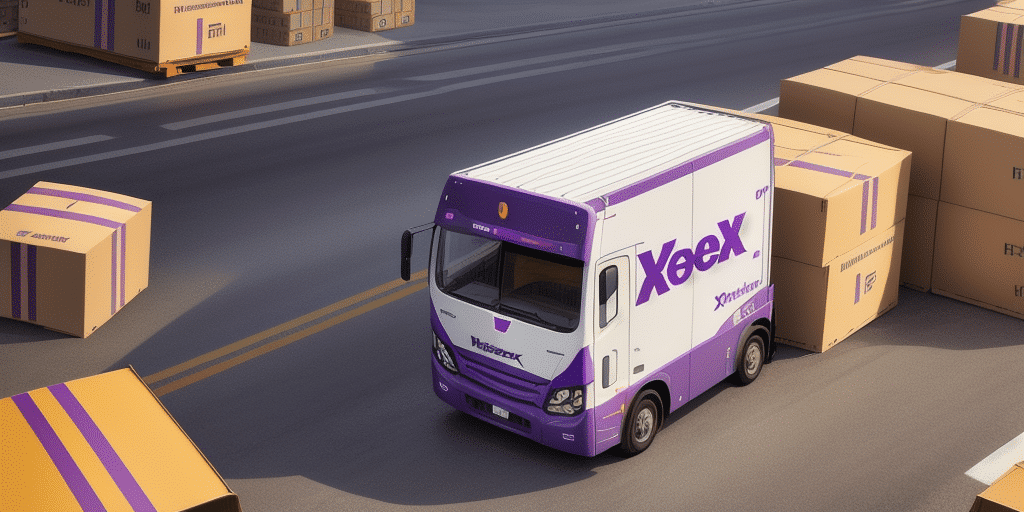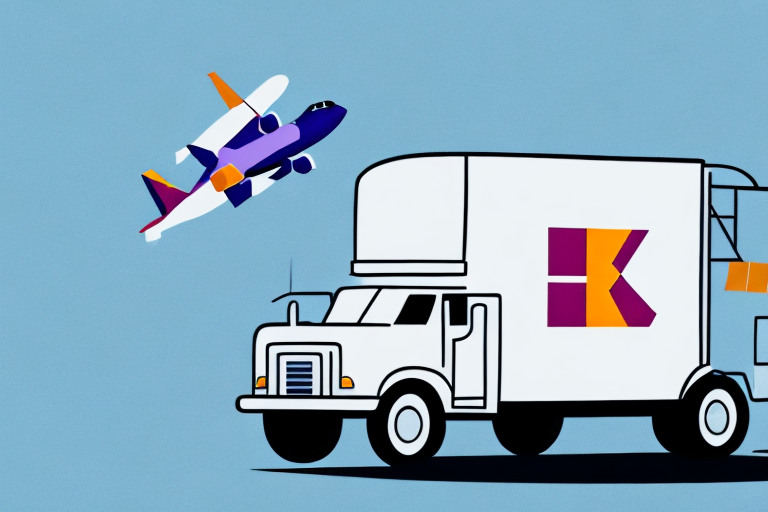Understanding the Carriage Value Limit When Using FedEx Ship Manager
If you frequently ship packages using FedEx Ship Manager, it's essential to understand the concept of Carriage Value Limit and how it affects your shipments. The Carriage Value Limit refers to the maximum value of goods that can be transported by FedEx. When the value of your package exceeds this limit, it can result in additional charges, delays in shipping, and other complications. In this article, we'll delve deep into the concept of Carriage Value Limit and how it impacts your shipping experience.
What is the Carriage Value Limit and How Does it Affect Shipping?
The Carriage Value Limit is a crucial aspect when it comes to shipping with FedEx. It defines the maximum allowable value of goods that can be transported in a single package. The primary purpose of this limit is to ensure that high-value shipments are adequately insured and protected during transit.
Determining the Carriage Value Limit
FedEx utilizes its Carriage Value Limit Table to ascertain the maximum value of different types of goods based on factors such as destination, mode of transportation, and the nature of the goods. For instance, the limit for electronic goods shipped internationally may differ from that of apparel shipped domestically.
Implications of Exceeding the Limit
Exceeding the Carriage Value Limit can lead to several repercussions:
- Additional Charges: Shipments that surpass the limit may incur extra fees to cover the increased insurance and handling costs.
- Shipping Delays: Higher-value shipments may undergo more stringent security checks, leading to potential delays.
- Insurance Limitations: In cases of loss or damage, reimbursements may be limited if the shipment exceeds the Carriage Value Limit.
FedEx Ship Manager: An Overview of the Shipping Platform
FedEx Ship Manager is an online shipping platform designed to help businesses manage their shipping needs efficiently. It offers a suite of tools and features that streamline the shipping process, providing users with the ability to handle shipments from a centralized dashboard.
Key Features of FedEx Ship Manager
- Shipping Label Creation: Easily create and print shipping labels tailored to your package specifications.
- Real-Time Tracking: Monitor the status of your shipments in real-time, ensuring timely deliveries.
- Pickup Scheduling: Arrange for package pickups at your convenience, reducing the need for manual drop-offs.
- Integration Capabilities: Seamlessly integrate with various e-commerce and order management systems to enhance workflow efficiency.
Benefits of Using FedEx Ship Manager
Integrating FedEx Ship Manager into your shipping operations can lead to significant improvements in efficiency and cost-effectiveness. Benefits include:
- Time Savings: Automate repetitive tasks, allowing your team to focus on core business activities.
- Reduced Errors: Minimize the risk of manual entry mistakes through automated processes.
- Enhanced Customer Satisfaction: Provide accurate tracking information, ensuring customers are informed about their shipment status.
How to Set Up Your FedEx Ship Manager Account for Optimal Results
Setting up a FedEx Ship Manager account is a straightforward process that can significantly optimize your shipping operations. Follow these steps to ensure a smooth setup:
Step 1: Create an Account
Visit the FedEx Ship Manager page and click on the "Sign Up" button. Provide the necessary business information, including your company name, address, and contact details.
Step 2: Configure Shipping Preferences
After account creation, navigate to the settings to customize your shipping preferences. This includes specifying default shipping options, preferred carriers, and packaging preferences.
Step 3: Integrate with Business Systems
To maximize efficiency, integrate FedEx Ship Manager with your existing e-commerce or order management systems. This allows for automated import of order data, reducing manual entry and potential errors.
Step 4: Add Payment Information
Enter your payment details to facilitate seamless billing for your shipments. FedEx Ship Manager supports various payment methods, ensuring flexibility for your business needs.
Step 5: Explore Shipping Tools and Features
Familiarize yourself with the platform's tools, such as label creation, tracking, and reporting features. Utilizing these tools effectively can enhance your overall shipping strategy.
The Importance of Understanding Carriage Value When Shipping with FedEx
Understanding the Carriage Value Limit is paramount when shipping with FedEx, as it directly influences several facets of your shipping process, including cost, shipping timeframes, and insurance coverage.
Impact on Shipping Cost and Timeframes
The Carriage Value Limit determines the additional charges and handling requirements for high-value shipments. Staying within the limit can help avoid unnecessary costs and ensure timely deliveries.
Insurance Coverage
Properly adhering to the Carriage Value Limit ensures that your shipments are adequately insured. In the event of loss or damage, compliance with the limit facilitates smoother reimbursement processes.
Regulatory Compliance
Different countries have varying regulations concerning the transportation of high-value goods. Understanding and complying with these limits helps avoid legal complications and ensures smooth international shipping.
What Happens When You Exceed the Carriage Value Limit?
Exceeding the Carriage Value Limit can lead to several challenges that may affect the efficiency and cost-effectiveness of your shipping operations.
Financial Implications
When the value of your shipment surpasses the established limit, FedEx may impose additional fees to cover the increased risk and insurance costs associated with handling high-value goods.
Shipping Delays
High-value shipments often require more stringent security checks and documentation. This can result in longer processing times and potential delays in delivery.
Insurance and Reimbursement Limitations
Even if you declare a higher value for your shipment, exceeding the Carriage Value Limit may restrict the amount of reimbursement you receive in the event of loss or damage.
Tips for Staying Within the Carriage Value Limit When Shipping with FedEx
Maintaining compliance with the Carriage Value Limit is essential for efficient shipping. Here are some strategies to help you stay within the limit:
- Accurate Valuation: Before shipping, accurately assess the total value of your goods, including any associated fees or taxes.
- Alternative Shipping Options: If your shipment exceeds the limit, consider splitting it into multiple packages or using different shipping methods that accommodate higher values.
- Secure Packaging: Use reliable and secure packaging materials to minimize the risk of damage, which can indirectly affect the perceived value of the shipment.
- Consult FedEx Representatives: Reach out to FedEx customer service for guidance on managing high-value shipments and understanding applicable fees.
Understanding the Different Types of Carriage Value Limits and Their Implications
FedEx delineates Carriage Value Limits based on several criteria, including the mode of transportation, destination, and the nature of the goods being shipped. Understanding these different limits is crucial for selecting the appropriate shipping method.
By Mode of Transportation
Different transportation modes—such as air, ground, or freight—have varying Carriage Value Limits. Air shipments, for instance, might have higher value thresholds compared to ground shipments due to the expedited nature and security measures in place.
By Destination
International shipments are subject to different Carriage Value Limits based on the destination country's regulations and the type of goods being imported or exported.
By Type of Goods
Certain high-value goods, such as electronics, jewelry, or pharmaceuticals, may have specific Carriage Value Limits that reflect their market value and handling requirements.
How to Calculate Your Shipment's Carriage Value Before You Ship
Accurately calculating your shipment's Carriage Value is crucial to ensure compliance and avoid unexpected charges. Follow these steps to determine the value:
Step 1: Determine the Value of Goods
Calculate the total market value of the items being shipped. This includes the cost of goods, taxes, and any additional fees associated with the purchase.
Step 2: Include Shipping and Handling Fees
Add any shipping, handling, or packaging fees to the total value of the goods. These additional costs contribute to the overall Carriage Value.
Step 3: Factor in Insurance Costs
If you opt for insurance coverage, include the premium costs in your calculation. Insurance ensures that your goods are protected against loss or damage during transit.
Step 4: Utilize FedEx Tools
FedEx provides online calculators and tools within the Ship Manager platform to help you estimate the Carriage Value. Utilize these resources for accurate calculations.
Why Compliance with Carriage Value Limits is Essential for Smooth Shipping Operations
Adhering to Carriage Value Limits is vital for maintaining the efficiency and reliability of your shipping operations. Compliance ensures that your shipments are handled appropriately, reducing the risk of unforeseen complications.
Financial Protection
Staying within the Carriage Value Limit ensures that your shipments are adequately insured, providing financial protection in case of loss or damage.
Operational Efficiency
Compliance minimizes the likelihood of delays and additional processing steps, ensuring that your shipments reach their destination promptly.
Legal and Regulatory Adherence
Different regions have specific regulations regarding high-value shipments. Compliance helps in avoiding legal issues and ensures smooth international shipping.
Common Mistakes to Avoid When Shipping with FedEx Ship Manager
Even with a robust platform like FedEx Ship Manager, common mistakes can lead to shipping complications. Here are some pitfalls to watch out for:
- Ignoring Carriage Value Limits: Failing to assess and adhere to the Carriage Value Limit can result in unexpected fees and shipment delays.
- Incorrect Shipping Addresses: Always double-check recipient addresses to prevent delivery failures or misrouted packages.
- Choosing Inappropriate Shipping Options: Selecting a shipping method that doesn't align with your shipment's value or urgency can lead to inefficiencies.
- Poor Packaging: Inadequate packaging increases the risk of damage, which can affect the shipment's value and insurance claims.
How to Resolve Issues Related to Carriage Value When Shipping with FedEx
Encountering issues related to Carriage Value is not uncommon, but they can be effectively resolved by following these steps:
Contact FedEx Customer Service
If you face challenges regarding the Carriage Value of your shipment, reach out to FedEx customer service for guidance and support.
Adjust Shipping Options
Modify your shipping method or split your shipment into smaller packages to remain within the Carriage Value Limit.
Increase Insurance Coverage
If your shipment exceeds the limit, consider purchasing additional insurance to cover the higher value, ensuring adequate protection.
Review Documentation
Ensure that all shipment documentation accurately reflects the value and nature of the goods to prevent discrepancies and delays.
Best Practices for Using FedEx Ship Manager to Maximize Efficiency and Cost Savings
To fully leverage the benefits of FedEx Ship Manager, consider implementing these best practices:
- Stay Organized: Keep all shipping information updated and organized within the platform to streamline operations.
- Utilize Automation: Automate repetitive tasks such as label creation and tracking updates to save time and reduce errors.
- Monitor Shipment Performance: Regularly review shipment performance metrics to identify areas for improvement.
- Leverage Reporting Tools: Use the platform's reporting features to gain insights into shipping trends and costs.
- Train Your Team: Ensure that all team members are proficient in using FedEx Ship Manager to maximize its potential.
- Optimize Packaging: Use appropriate packaging materials to protect goods and potentially reduce shipping costs.
- Stay Informed: Keep abreast of FedEx updates and feature enhancements to continually improve your shipping processes.
By adhering to these best practices, you can enhance the efficiency of your shipping operations, achieve significant cost savings, and ensure a seamless experience for your customers.
Conclusion
Understanding and adhering to the Carriage Value Limit is fundamental for optimizing your shipping experience with FedEx Ship Manager. By accurately assessing shipment values, utilizing the platform's comprehensive tools, and following best practices, businesses can ensure efficient, cost-effective, and reliable shipping operations. Always stay informed about FedEx's policies and leverage customer support to navigate any challenges related to Carriage Value Limits.






















